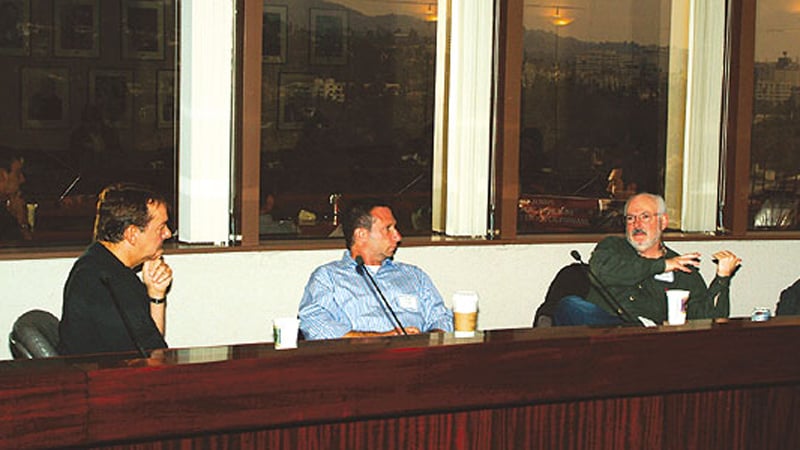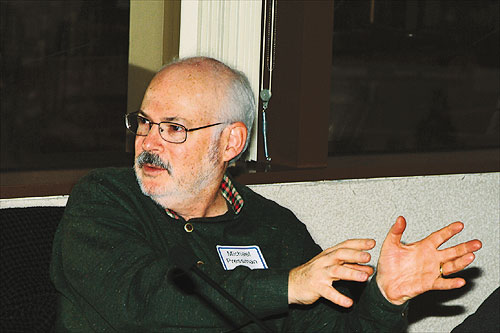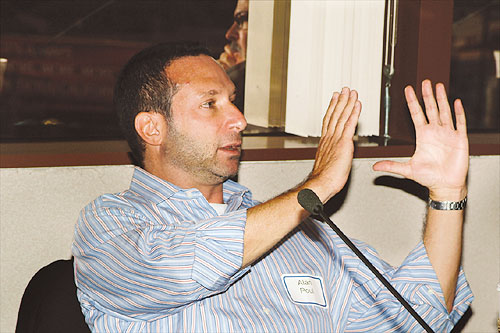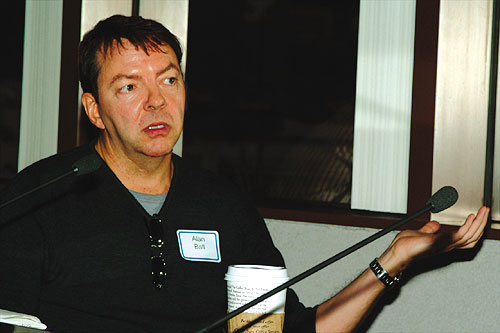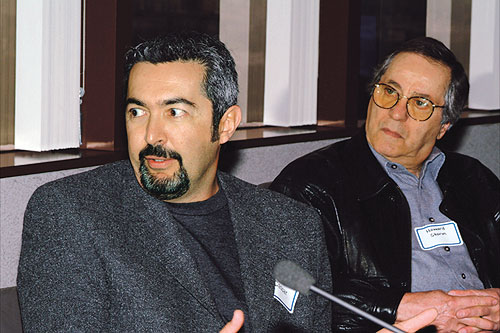Show directors/producers Poul and Alan Ball as well as director/actress Kathy Bates were nominated for the episodes "Nobody Sleeps," "I'm Sorry I'm Lost" and "Twilight," respectively. The remaining two nominations went to Jon Cassar for Fox's "7:00 AM–8:00 AM" episode of 24 and Christopher Misiano for the "25" episode of NBC's The West Wing.
"Absolutely," Ball agreed. "You have to know what that tone is from the beginning. You have to make sure that the comedy isn't being played for laughs, therefore killing it. Then, too, the tone can be too somber, or too emotional, and that can be problematic, as well."
Cassar's guidelines are prescribed and rigid only in that 24 is shot in "real time," and in its reliance on up to 40 percent and 50 percent of coverage of telephone conversations. These are often depicted via a multi split-screen technique. Cassar said the show relies on handheld cinematography with its moving, so-called "dirty" frame.
"Individual directors get a lesson in how to shoot," said Cassar, who has directed about a third of the episodes of 24. "Some of them have trouble going back to the standard three-camera lighting setups for series. The environment is in-the-moment all the time, because of all the coverage. As a director, you have to keep all of this constant juggling in control. [Actor] Kiefer Sutherland says that he treats the handheld guy as one of the actors. We hide behind things, peering in for the audience. We're sneaky. We do none of the standard mediums, close-ups and overs.
Cassar said that continuity on the show is helped by the fact that one director is assigned to back-to-back episodes; his "7:00 AM–8:00 AM" was the finale, but he also directed the preceding "6:00 AM–7:00 AM" episode. "It's like shooting a two-hour movie," he said, adding that the same locations and "splinter" unit are usually used for both episodes.
Procedures are less "fixed" on Six Feet Under. For one thing, HBO isn't locked into the weekly grind that has historically impacted network TV and sent high-achieving shows to hiatus rather than deliver an inferior product. Poul and Ball said that episodes sometimes clocked in at more than an hour, but have also been as short as 49 minutes. The writers, Poul said, convene in October, the show begins shooting in December, and is on the cable net by June. Post-production wraps in July.
"We come in with a shot list," Poul said. "Kathy, on the other hand, unless there's a montage moment, will not. She will prep the shot as it is in the script and block it out with [director of photography] Alan Caso. Then, with two takes, she's got it. She's one of those actors who gets it in her head and in to her heart. She really knows what she's doing. Actors are often the emotional center, and the director articulates that."
Poul came to directing via producing, Bates from acting and Ball from writing, most famously the Academy Award-winning screenplay for American Beauty, which also received the 1999 DGA Award for Feature Film Directing by Sam Mendes. Cassar came to the vocation after being a Steadycam operator. He said that the question he gets asked most as a director is what he says to help individual actors in their performance.
Poul, Pressman and Cassar all feel that the trend in episodic has been toward fewer freelance directorial assignments. "This used to be a writer's medium," Poul said. "By keeping directors in place, it helps maintain consistency. Because we do so few shows a year and have such a large stable of directors, we could book up a year with the same directors. But we always keep our eyes open for new talent, to expand the universe of our directors."
